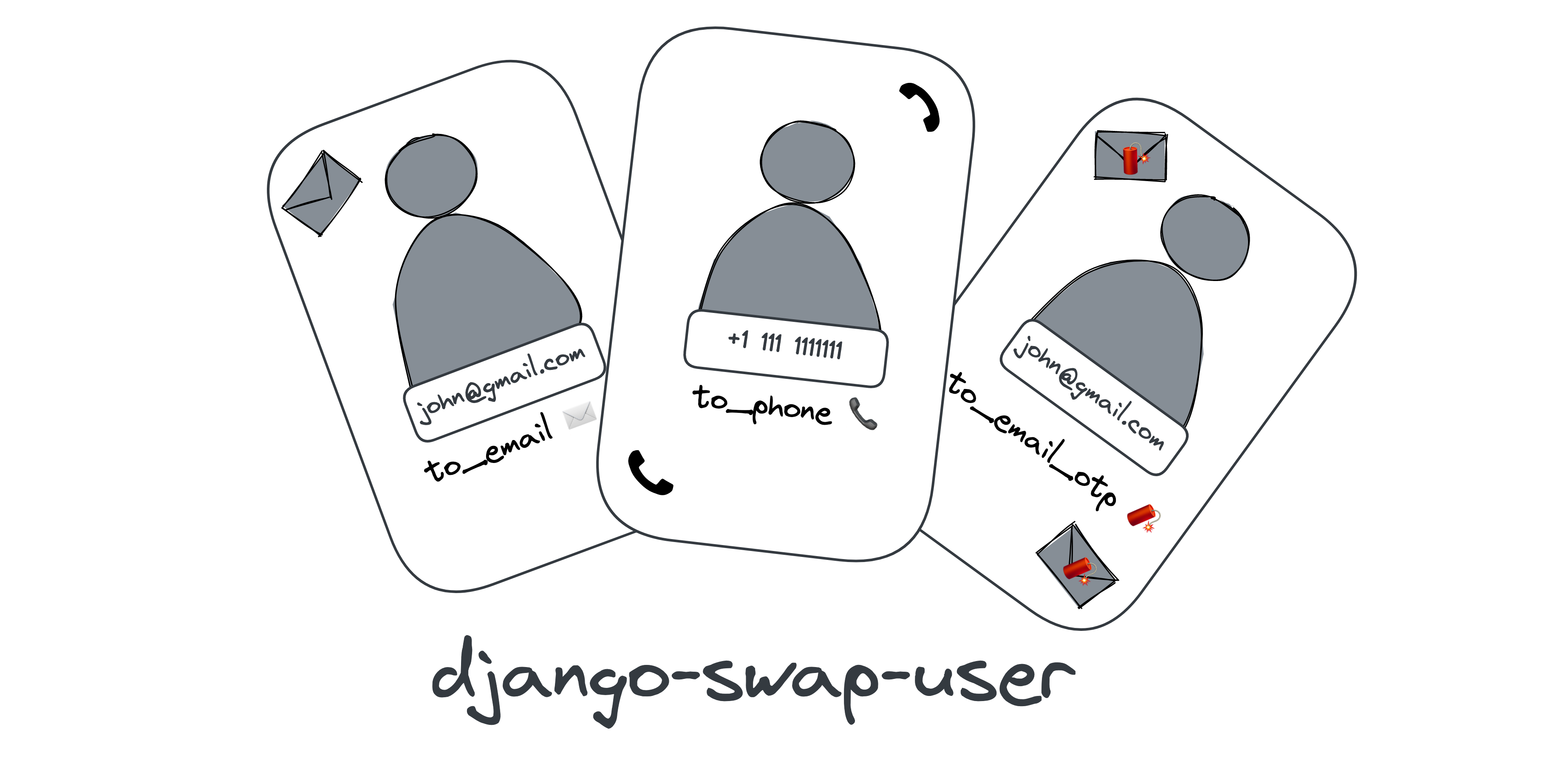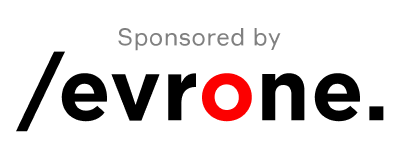https://github.com/artinnok/django-swap-user
(Beta) Simple and flexible way to swap default Django User
https://github.com/artinnok/django-swap-user
authentication django otp otp-verification python user user-management
Last synced: 5 months ago
JSON representation
(Beta) Simple and flexible way to swap default Django User
- Host: GitHub
- URL: https://github.com/artinnok/django-swap-user
- Owner: artinnok
- License: mit
- Created: 2020-07-23T10:36:39.000Z (almost 5 years ago)
- Default Branch: master
- Last Pushed: 2023-11-22T16:37:00.000Z (over 1 year ago)
- Last Synced: 2025-02-06T02:46:02.425Z (5 months ago)
- Topics: authentication, django, otp, otp-verification, python, user, user-management
- Language: Python
- Homepage: https://skonik.github.io/django-swap-user-docs/
- Size: 137 KB
- Stars: 62
- Watchers: 2
- Forks: 5
- Open Issues: 2
-
Metadata Files:
- Readme: README.md
- License: LICENSE
Awesome Lists containing this project
- stars - artinnok/django-swap-user - (Beta) Simple and flexible way to swap default Django User (Python)
- stars - artinnok/django-swap-user - (Beta) Simple and flexible way to swap default Django User (Python)
README
# Django-Swap-User (Beta)

If you are tired of copying one custom user model from one project to another - use this package.
This will do it all for you.
## Documentation
All official documentation hosted [here](https://skonik.github.io/django-swap-user-docs/).
The documentation repo is located [here](https://github.com/skonik/django-swap-user-docs).
## Installation
```
pip install django-swap-user
```
## Basic usage
1. Choose a model that suits you and copy related settings from the table:
| Application name | Username field | Description | `INSTALLED_APPS` | `AUTH_USER_MODEL` | Replace `django.contrib.admin` to |
|------------------|----------------|------------------------------------------------------------------------|------------------------------------------------|----------------------------------------|--------------------------------------------|
| `to_email` | `email` | User with `email` username | ```"swap_user", "swap_user.to_email",``` | `"swap_to_email.EmailUser"` | not required |
| `to_email_otp` | `email` | User with `email` username, without `password` and OTP authentication | ```"swap_user", "swap_user.to_email_otp",``` | `"swap_to_email_otp.EmailOTPUser"` | `"swap_user.apps.OTPSiteConfig"` |
| `to_phone` | `phone` | User with `phone` username | ```"swap_user", "swap_user.to_phone",``` | `"swap_to_phone.PhoneUser"` | not required |
| `to_phone_otp` | `phone` | User with `phone` username, without `password` and OTP authentication | ```"swap_user", "swap_user.to_phone_otp",``` | `"swap_to_phone_otp.PhoneOTPUser"` | `"swap_user.apps.OTPSiteConfig"` |
2. Add corresponding app to `INSTALLED_APPS`:
```python
INSTALLED_APPS = [
...
"swap_user",
"swap_user.to_email",
...
]
```
3. Change `AUTH_USER_MODEL` to corresponding:
```python
AUTH_USER_MODEL = "swap_to_email.EmailUser"
```
4. If required replace `django.contrib.admin` in `INSTALLED_APPS` to something.
5. Apply migrations:
```bash
python manage.py migrate swap_to_email
```
## Architecture
Application `swap_user` split into 3 apps:
- `to_email` - provides user with `email` username field
- `to_email_otp` - provides user with `email` username field and OTP (One Time Password) authentication
- `to_phone` - provides user with `phone` username field
- `to_phone_otp` - provides user with `phone` username field and OTP (One Time Password) authentication
## Why the unusual architecture?
Because if we leave them in one app, they all will create migrations and tables - such approach leads us to redundant tables.
They will be treated as 3 custom models within the same app, which causes perplexing and cognitive burden.
With such approach (when there is a common app which contains internal apps) - the user
can choose to connect with the specific user model which is most applicable for concrete business-logic.
I have found such approach at Django REST Framework `authtoken` application and decide to use it - reference is [here](https://github.com/encode/django-rest-framework/tree/master/rest_framework/authtoken).
## Providing User model at start of project
When you are starting a project from zero or scratch - this is a best moment to provide custom User model.
Because you have't a lot of migrations or you can easily regenerate them. Moreover, Django's [official docs](https://docs.djangoproject.com/en/dev/topics/auth/customizing/#using-a-custom-user-model-when-starting-a-project)
recommend to provide custom User model even if you are fully satisfied with default one - in future it will be easier to extend custom model that fits into your business cases.
## Providing User model at mid of project
This is a harder way of doing things, but it is still possible to do:
- Do all the steps at testing database and ONLY IF all of them was successful - try to apply at production environment
- Please note that these steps are **common** - they fit in most cases, but in some circumstances you need act on situation.
- Create a backup of your database
- Add stable tag into your repository or save a commit hash reference
- Pray to the heavens
- Remove all of yours migrations in every app of Django's project
- Remove all records from `django_migrations` table, for example with SQL `TRUNCATE django_migrations`
- Now we have a "clean" state, so we can change default model
- Generate new migrations for all of your applications - `python manage.py makemigrations`
- Now we need to [fake migrate](https://docs.djangoproject.com/en/4.0/ref/django-admin/#cmdoption-migrate-fake) because we already have all the tables with data
- First fake the `auth` application because we are depending from this one - `python manage.py migrate --fake auth`
- Install this library, follow instructions and apply migrations
- Then fake rest of migrations we have - `python manage.py migrate --fake`
- Run your application!
## Development
If you want to contribute in this project please consider the following instruction.
### Project setup for development
1. `poetry install` to install poetry deps;
2. `pre-commit install` to install git hooks;
### Commands useful in development
You can execute a bunch of useful commands located inside `Makefile`:
* `make lint` - run code quality tools such as flake8, isort, safety;
* `make format` - format your code using black and isort;
* `make test` - run tests;
### Sponsor
[django-swap-user](https://evrone.com/django-swap-user?utm_source=github&utm_medium=django-swap-user) project is created & supported by [Evrone](https://evrone.com?utm_source=github&utm_medium=django-swap-user)
[ ](https://evrone.com?utm_source=github&utm_medium=python-guidelines)
](https://evrone.com?utm_source=github&utm_medium=python-guidelines)
